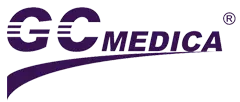-
Laparoscopic & Endoscopic Products
-
Laparoscopic Procedures
- Heated Insufflation Tube
- Laparoscopic Smoke Filter
- High FLow CO2 Laparoscopic Insufflation Filter Tube Set
- Veress Needle
- High Flow Heated Insufflation Tube
- Arthroscopy Irrigation Set
- Disposable Bladeless / Bladed Trocar with Thread / Balloon
- Disposable Wound Protector
- Disposable Height Changeable Wound Protector
- Retrieval Bag
- Laparoscopic Suction Irrigation Set
- Laparoscopic Insufflator
- Endoscopy Care and Accessories
-
Laparoscopic Procedures
- Respiratory & Anesthesia
- Cardiothoracic Surgery
- Gynaecology
-
Urology
- CathVantage™ Portable Hydrophilic Intermittent Catheter
-
Cysto/Bladder Irrigation Set
- M-easy Bladder Irrigation Set
- B-cylind Bladder Irrigation Set
- S-tur Bladder Irrigation Set
- S-uni Bladder Irrigation Set
- B-uro Bladder Irrigation Set
- Premi Bladder Irrigation Set
- J-pump Bladder Irrigation Set
- J-tur Bladder Irrigation Set
- H-pump Bladder Irrigation Set
- Sup-flow Bladder Irrigation Set
- Maple Irrigation Set
- Peony Irrigation Set
- Nelaton Catheter
- Urinary Drainage Bag
- Urinary Drainage Leg Bag
- Enema Kits
- Sitz Bath Kits
- Click Seal Specimen Container
- Silicone Male Catheter
- Spigot Catheter and Adaptor
- Sandalwood Irrigation Set
- Freesia Irrigation Set
- Daffodil Irrigation Set
- Single-Use Digital Flexible Ureteroscope
- Enteral Feeding Products
- Dental
- Fluid Management
- Warming Unit and Warming Blanket
-
Operating Room Necessities
- Nasal and Oral Sucker
- Disposable Medical Equipment Covers
- Magnetic Drape / Magnetic Instrument Mat
- Suction Handle
-
General Surgery
- Perfusion Atomizer System
- Gastric Sump Tube
- Surgical Hand Immobilizer / Lead Hand for Surgery
- Administration Set for Blood
- Ear/Ulcer Syringe
- Bulb Irrigation Syringe
- Toomey Irrigation Syringe
- Mixing Cannula
- Basin Liner/Basin Drape
- Medical Brush
- Sponge Stick
- Suture Retriever
- Needle Counter
- Disposable Calibration Tube
- Heparin Cap
- 100ML Bulb Irrigation Syringe
- Scleral Marker
- Surgical Light Handle
- Mucosal Atomization Device
- Durable Medical Equipment
- Patient Handling System
- PVC-FREE Medical Device
- Emergency
-
Patient Air Transfer Mattress Online WholesaleDec 17 , 2024
-
Cystoscopy Irrigation Set Online Wholesale | GCMEDICADec 17 , 2024
-
Patient Warming Device and Blanket Online wholesaleDec 16 , 2024
-
CathVantage™ Twist Intermittent Catheter | GCMEDICASep 20 , 2024
-
Single-Use Digital Flexible Ureteroscope | GCMEDICASep 20 , 2024
Tranquilized Analgesia Nasal Endotracheal Intubation Technique
Clinical experience has shown that nasal endotracheal intubation is often used for patients who have difficulty with oral intubation, need to maintain tracheal intubation post-surgery or require clinical treatment of the oropharynx. This article mainly discusses the use of sedation and analgesia for nasal endotracheal intubation.
Classification of nasal endotracheal intubation
Nasal endotracheal intubation is clinically classified as either visual or blind insertion techniques. Visual insertion is divided into complete visual intubation and partial visual intubation. Complete visual intubation is typically performed using a bronchoscope for guidance throughout the alignment of the insertion. Partial visual intubation typically entails blindly inserting a guide wire through the nasal cavity and into the pharynx followed by exposing the vocal cords via an endoscope and placing the tube into the trachea. The choice between techniques typically hinges on the patient's needs and conditions, as advised by the attending physician. Endotracheal tube suppliers must remain vigilant, ensuring that healthcare facilities have access to the appropriate tubes required for nasal endotracheal intubation.
All three types of nasal endotracheal intubation require adequate sedation and analgesia. Bronchoscope-guided intubation also requires the use of drugs to inhibit airway secretions, such as atropine or glycopyrrolate. The other two nasal endotracheal intubation techniques do not have particularly high demands on the removal of airway secretions, although the bronchoscope-guided intubation requires slightly higher skills in operation.
Anesthesia and operation for nasal endotracheal intubation
During anesthesia and operations involving nasal endotracheal intubation, the utilization of a disposable endotracheal tube can help ensure patient safety. After the patient enters the operating room, they are typically asked to extend their tongue out, after which 2-3ml of 2% lidocaine is sprayed along the whole tongue surface naturally flowing into the tongue root pharynx. The patient is then instructed to hold the anesthetic in his throat for about 5 minutes before swallowing. Then, intravenous sufentanil 10-20ug is administered, followed by an infusion of dexmedetomidine at a loading dose of 0.4ug/kg for 5-10 minutes. Small doses of remifentanil can also be infused simultaneously until intubation is complete. For bronchoscope-guided intubation, atropine or glycopyrrolate (0.01mg/kg) is also given through an intravenous infusion. After the patient swallows the lidocaine, 2-3ml of 2% lidocaine is injected into the vocal cords through the laryngoscope or is injected via puncture through the cricothyroid membrane. The latter is more effective. At this point, episodic sedation prior to nasal endotracheal intubation was essentially complete.
After removing the nasal swabs, any phlegm in the oropharynx is initially removed. For bronchoscope-guided intubation, the scope is inserted deep into the lower nostril and gradually enters the trachea via the middle of the airway. For the other two methods, the catheter is inserted through an adult suction tube, and the catheter is inserted through the nasal cavity. If there is any resistance while inserting the catheter, it can be slowly rotated to place it through the narrow passages both anteriorly and posteriorly, and then placed into the pharynx.
After the tip of the catheter enters the pharynx, the vocal cords are exposed by inserting the laryngoscope through the mouth, and the catheter can be visually placed into the trachea via the catheter-guided pouch, or with the aid of a catheter clamp.
In conclusion, the above-mentioned intubation techniques can be selected depending on the patient's condition, the surgical situation, personal experience, equipment, medication and personnel available in the department.

